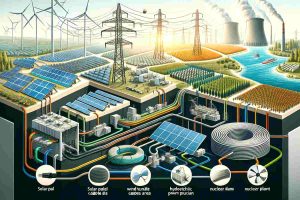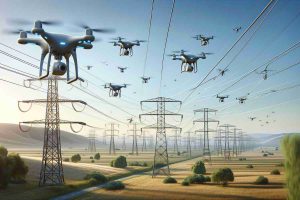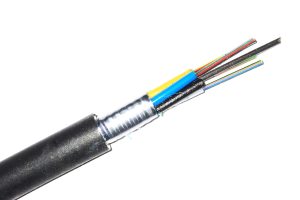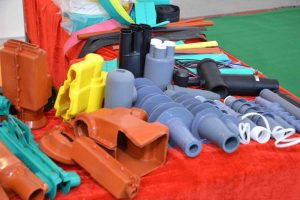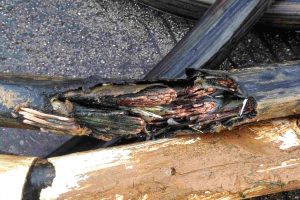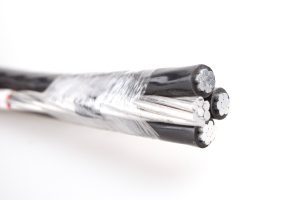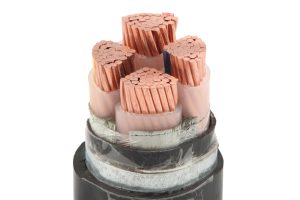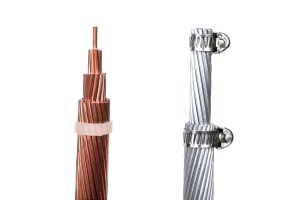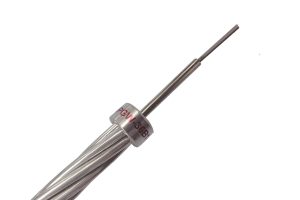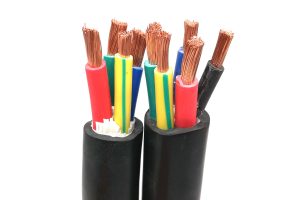The global energy landscape is undergoing an unprecedented transformation, driven by the development of new energy sources and growing environmental awareness. This revolution is not only redefining the way we produce and consume energy, but is also having a significant impact on related industries, like the cable industry.
Information
Wire and cable are important industrial products for a wide range of applications.. ZMS provides you with technical information on all types of wire and cable.

Drones for Inspection of Power Lines: Autonomy and Precision
With the continued acceleration of the construction of new electrical systems, The use of drones for inspection of power lines has begun to take center stage in the market. Commercial drones seem to have found new application perspectives in this broad market.
What Are the Types of Fiber Optic Commonly Used??
Fiber optic cables are today an important and indispensable part of communication lines.. For different operators and different geographical areas, The most used types of optical fiber can be different. This article introduces the different types of fiber optics, categorizing them into three main types: standard optical cables, FTTH fiber optic, and fiber optic ribbon cables.
What Are Electrical Cable Terminations and How to Choose Them?
The stability and safety of power lines are crucial to our daily lives. Reliable power transmission depends not only on the safe operation of cables, but also the effective collaboration of the teams that support these cables. Between these, electrical cable terminations play a fundamental role.
Corrosion in Copper and Aluminum Cables
The principle of corrosion of copper cables and aluminum cables refers to a chemical process that occurs when these cables come into contact with the specific environment, causing rust and damage to the metal surface. These chemical processes mainly include two mechanisms: electrochemical corrosion and chemical corrosion.
What Are Drop Cables? Everything you need to know
In the world of electrical installation, Drop cables play a crucial role, forming the bridge between the electrical power distribution network and the internal system of a building or property. these wires, known in English as SE cables (service entrance cables), They are essential to guarantee a safe and efficient connection to the electrical grid. in this guide, We will explore the key aspects of service conductors, including its types, Applications, and essential technical information.
DC Cables XLP: Advances and Challenges in the World of Cabling
Before the XLP revolution (cross-linked polyethylene), Oil-impregnated paper-insulated cables were standard in DC projects. Hoy, Triple layer XLP DC cables have taken the lead due to their economy, Superior energy transport capacity and simplified maintenance, Outperforming traditional cables at all voltage levels.
What are the Differences between AAAC Cables and Copper Cables??
In the power distribution system, Power cables are the main material used to transport electricity. Currently, The most common electrical cables are those with a copper core and those made of aluminum alloy. Does 40 years, cable industry developed AA8000 series aluminum alloy as conductive material. Currently, more than 90% of municipal projects, civilians, Industrial and commercial in the United States use AAAC cables (aluminum alloy conductors).
Performance Study of OPGW Optical Cables in Extreme Cold Conditions
In the vast panorama of communication infrastructures, OPGW optical cables play a crucial role in ensuring efficient data transmission. Nevertheless, its performance in extreme conditions, particularly in severe cold environments, It is an aspect that deserves careful attention.
What is a Three Phase Cable? Applications and Technical Considerations
A three-phase cable refers to a cable used for three-phase alternating current electricity.. Three-phase alternating current is made up of three alternating current circuits with the same frequency, equal potential amplitude and a phase difference of 120° from each other, forming an electrical energy system. Three-phase cables are usually three-core cables., quad core and five core.

